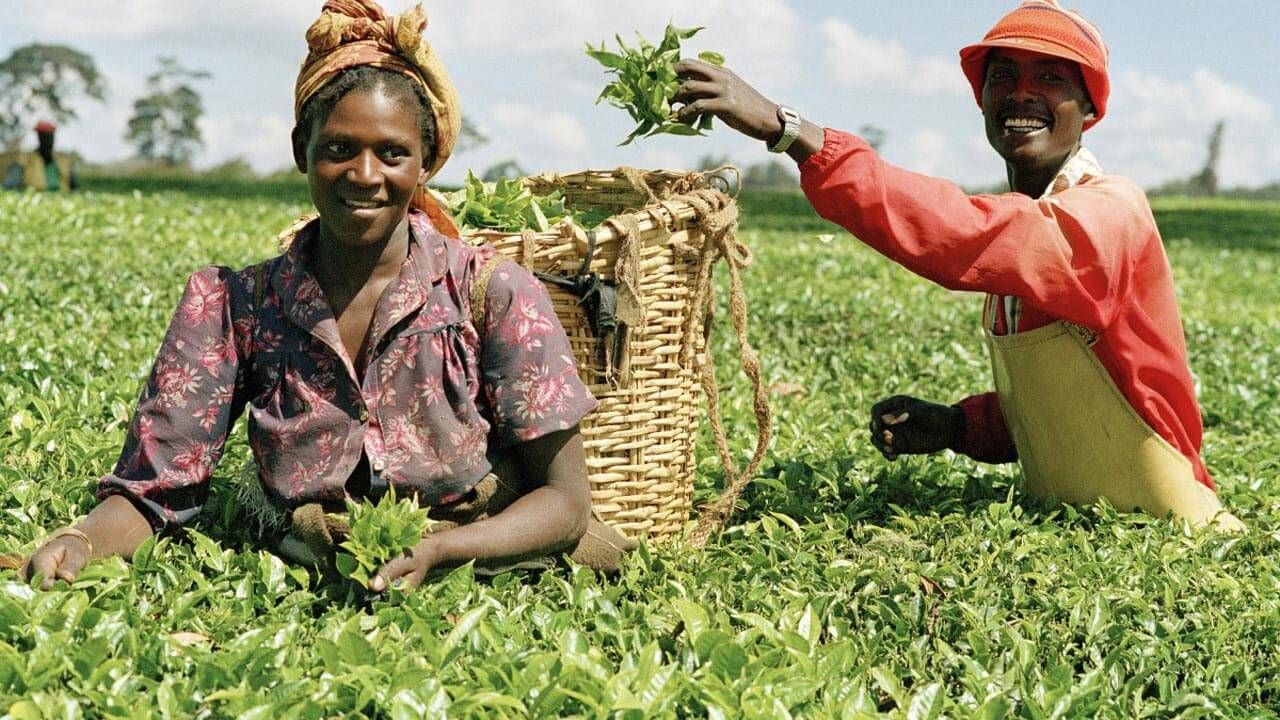A snapshot of the agricultural sector's contribution to Tanzania's Gross Domestic Product (GDP) over time, reflecting significant growth and forecasting future trends
Recent Performance
- Q4 2023 Performance: The GDP from agriculture in Tanzania surged to 10,802,127.78 TZS million in the fourth quarter of 2023. This marked a substantial increase from 6,640,612.21 TZS million in the third quarter of 2023.
- Historical Average: From 2005 to 2023, the average GDP from agriculture was 5,582,450.30 TZS million. This shows that the sector's contribution has more than doubled over this period.
- Historical Peaks and Troughs:
- The all-time high of 10,802,127.78 TZS million was reached in Q4 2023.
- The lowest recorded value was 1,496,674.79 TZS million in the third quarter of 2005.
Forecasts and Projections
- Near-Term Forecast (End of Q1 2024): TICGL macro models and analysts predict that the GDP from agriculture will decrease to 7,039,049.00 TZS million by the end of the current quarter (likely reflecting a seasonal downturn or other influencing factors).
- Long-Term Projections:
- 2025 Projection: The GDP from agriculture is projected to grow to around 12,160,171.00 TZS million.
- 2026 Projection: Continued growth is expected, with GDP from agriculture projected to reach approximately 12,901,942.00 TZS million.
Context and Implications
- Seasonal Fluctuations: The sharp increase in Q4 2023 could be attributed to seasonal harvests, government interventions, or other economic factors specific to that period.
- Long-Term Growth: The long-term projections indicate sustained growth in the agricultural sector, likely driven by ongoing investments, policy initiatives, and perhaps improvements in agricultural productivity and infrastructure.
- Significance for Policy and Planning: These figures are critical for policymakers and stakeholders in agriculture and related sectors. The data informs decisions on resource allocation, investment in infrastructure, and development programs aimed at enhancing agricultural productivity and sustainability.
Sources
- National Bureau of Statistics (NBS), Tanzania: Provides historical and current data on GDP contributions from agriculture.
- TICGL (Tanzania Investment and Consultant Group Ltd): Offers macroeconomic models and forecasts for future trends in the agricultural sector.
The GDP from agriculture in Tanzania offers significant insights into the country's economic development, especially regarding the role of agriculture in driving growth
The agriculture’s vital role in Tanzania's economic development. It signals the need for continued focus on this sector to drive broader economic growth, reduce poverty, and ensure sustainable development. However, it also points to the importance of diversifying the economy and investing in other sectors to build a more resilient and inclusive economic future.
- Agriculture as a Key Economic Driver:
- Dominant Sector: Agriculture remains a central pillar of Tanzania's economy, contributing a substantial portion to the country's GDP. The sharp increase to over 10,802,127.78 TZS million in Q4 2023 underscores the sector's critical role.
- Growth and Potential: The sector's ability to reach an all-time high in GDP contribution in Q4 2023 suggests robust growth potential, indicating that with the right policies and investments, agriculture can continue to drive economic development.
- Seasonal and Structural Dynamics:
- Seasonal Impact: The fluctuations in GDP from agriculture, as seen in the jump from Q3 to Q4 2023, highlight the sector's sensitivity to seasonal changes, such as harvest cycles, which can significantly impact economic performance in short periods.
- Structural Improvements: The long-term upward trend, with projections of continued growth through 2025 and 2026, suggests structural improvements in the agricultural sector. These could be due to advancements in technology, better infrastructure, improved access to markets, and effective government policies.
- Economic Diversification:
- Dependency on Agriculture: While agriculture is a strong economic driver, the data also suggests a need for diversification to mitigate risks associated with over-dependence on a single sector. This is especially important given the sector's vulnerability to climate change, price volatility, and other external shocks.
- Catalyst for Other Sectors: Growth in agriculture can have a positive spillover effect on other sectors such as manufacturing, services, and trade, especially in agro-processing, logistics, and retail.
- Investment and Policy Implications:
- Targeted Investments: The projected growth in agricultural GDP indicates that continued or increased investments in rural infrastructure, agricultural technology, and education could yield substantial economic benefits.
- Policy Focus: Policymakers might use this data to prioritize agriculture in national development strategies, recognizing its role in poverty reduction, food security, and employment. The data supports the case for policies that enhance agricultural productivity, market access, and value addition.
- Impact on Poverty and Rural Development:
- Rural Economy: As a large portion of Tanzania's population depends on agriculture for their livelihood, the sector's growth directly impacts poverty reduction and rural development. Improved agricultural GDP suggests better incomes for farmers, increased food security, and overall improvement in rural living standards.
- Inclusive Growth: Focusing on agriculture as a growth sector helps ensure that economic development is inclusive, benefiting a broad swath of the population, particularly in rural areas.
- Economic Stability and Resilience:
- Economic Resilience: The projected long-term growth in agriculture indicates a potential for enhanced economic resilience. A strong agricultural sector can provide a buffer against global economic downturns by ensuring food security and generating export revenues.
- Sustainable Development: The growth trend also points to the importance of sustainable practices in agriculture to maintain and build on this momentum. Sustainable agriculture can contribute to environmental conservation, ensuring that economic development is long-lasting.
